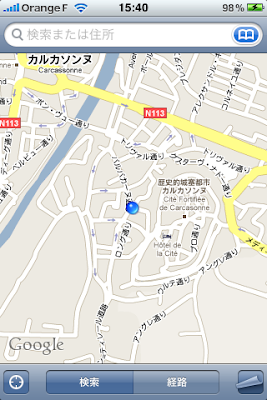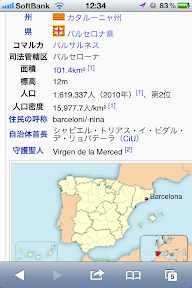Guidebooks. Since I often go to Europe, I’ll use “Europe Edition”.
最近は旅慣れてきたこともあるんだけど、意外な悩みどころといえば「ガイドブック」です。
It’s not the first time that so-called guidebooks such as Globe-Trotter don’t fully meet the needs of where I’m going.
And how heavy it is….
So, these days, it’s still the iPhone.
Unless you’re in a rural area like I am, you can usually get a signal, which is super helpful.
If it’s a map, Google Maps is good enough.
The route can be checked without any problem.
When it comes to location information search, foursquare is also quite useful. It’s useful not only for checking in, but also for looking up various places.
When sightseeing in the city. If you are in the city, you can use a guidebook, but Wikipedia is quite useful.
Even if you’re not in a city, you can usually find a small town by googling in the local language.
なお、フランスだと、「フランス観光開発機構公式サイト」がとっても使えます。
I feel that this is enough for France. If you are very particular about it, it’s different, but if it’s just for sightseeing, I think this is more than enough.
I think you could also use 4travel, which I mentioned yesterday.
It’s just that it’s now compatible with smartphones, but I think it’s a big deal that it’s now easier to look up information on the iPhone.
You may find some unexpected places there that you didn’t know about before you left.
それと日本からホテルを予約せずに現地で予約する場合は、Booking.comのアプリが使える。
Nowadays, it is normal to use iPhone or smart phone to go sightseeing abroad.
But even so, there are risks such as theft, batteries running out, and breakage, so I think a paper book “guidebook” is still necessary. Of course I always take it with me.
Well, you can buy it locally.
Finally.
This book is a bit extreme in some examples, but it is a good book to be aware of the re gold travel situation, so why not read it?
Go Takagi
In addition, when using a smartphone overseas, there are some things to worry about
“The packet bill.
“SIM-free phones, iPhones.”
についても自分なりの考えを持っていますので、また別の記事で書いてみたいと思います。













